Evaluation
While the selection of high-end 140mm fans is quite narrow, there is one model that may be of interest to you. Especially if you want the “most effective” for your radiator, at low noise levels. Certain features of the high-end admittedly don’t appear on the Toughfan 14 Pro, but when it comes to cooling radiators, Thermaltake’s fan doesn’t have much competition in this discipline. It will defend its place in silent builds. Although…
Evaluation
In its “royal discipline”, the Toughfan 14 Pro will be hard to beat. At very low speeds of around 600rpm, the airflow through the radiators is significantly higher than on any other 140mm fan we’ve tested to date. That’s by a minimum of 22% (in comparison to the 140 mm BeQuiet! Silent Wings Pro 4 on a thinner radiator with a higher FPI) and on a thicker radiator with a lower FPI, in the quietest mode tested, the Toughfan 14 Pro’s lead over the runner-up (which this time is the Fluctus 140 PWM ARGB) is up to 33%. The higher the rpm, the more the difference decreases, but up to some ~825 rpm it is still large and the Thermaltake fan clearly dominates everything.
The TF 14 Pro retains the top positions even at higher speeds, but the lead – typically ahead of the Silent Wings Pro 4 (BL099) – is already “only” in single digits. To label this fan as the absolute most efficient on radiators may seem like a bit of a bold move. Especially when our database of 140mm fans is quite sparse. Internally, however, we have tested other competing fans, which always fall short. On a radiator, of course. In other application scenarios, you can already see the Toughfan 14 Pro’s shortfall even now, where this fan already “loses” even with the BeQuiet! Silent Wings Pro 4 in a non-restrictive environment (no obstacle). But that is a top-notch fan anyway, so there’s no shame in that.
The worst performance for the Thermaltake is with the plastic filter, it doesn’t really suit the latter and the fan’s performance is only average. But on a nylon filter with a fine, non-restrictive mesh, the TF 14 Pro is already at the head of the peloton again. And it’s a good thing in general that it doesn’t clash with the unreinforced type of this filter. With many 140 mm you can already run into the fact that there will be abrasion (of the impeller with the mesh). The larger, 140mm format is more susceptible to this type of collision than 120mm because the larger surface area (of the filter) will eventually cause the screen to sag more. But the Thermaltake fan is also prepared for these conditions exceedingly well. On the hexagonal grille, however, the competing BeQuiet! (Silent Wings Pro 4) ranks higher. With it, there are also higher quality demands on the bearings. Overall. Also in terms of manufacturing tolerances, which are lower with the Toughfan.
It is not often that there is such a large variation from one piece to the next with otherwise top-notch fans. While most are really quiet and you practically can’t hear the friction inside, some do clack rather annoyingly. It may not always be, but only at certain positions. We see this as the biggest shortcoming of an otherwise great fan. To some extent, however, it’s a trade-off, as the price for the TF 14 Pro is quite low considering the other features. In short, cuts had to be made somewhere.
Also worth mentioning is the extremely powerful motor with almost 10 W. Due to its impact, even in a restrictive environment, the fan maintains a stable speed and even under the influence of contamination (with lubricant degradation) at higher friction, it still has a large reserve and the motor won’t just “grind to halt” easily. At the same time, the operating power consumption of a new fan without more resistance is relatively low and the coefficient of airflow per watt is average (from the perspective of 140 mm fans) or above average (when taking into account 120 mm fans, which require higher speeds for comparable airflow).
Vibration is very low even at the highest speeds (approx. 2080 rpm), which is also thanks to the stiff LCP blades. The acoustic profile is more or less comparable to the 140 mm BeQuiet! Silent Wings Pro 4. This means there are some rumblier peaks between 110–185 Hz. But it’s nothing terrible that deserves to get a mention in the minuses.
Sure, acoustically, it’s not the Noctua NF-A12x25, but such (peakless) results are hard to achieve in the 140mm format when the fan is characterized by extremely high efficiency on radiators. In that case, the longer blades are more flexible (and their tips vibrate at least a little…) even when using a material as stiff as the Toughfan 14 Pro’s. The latter can always be thicker, with a better result, but here it should be pointed out that Thermaltake fans cost “only” 26 EUR, and considering that, all their features are excellent. Especially if the goal is to cool radiators of liquid loops as best as possible at a very low noise level. In this, they will be hard to beat by other available fans. At the soonest, it might be the still unreleased new-generation Noctua models? You’ll have to wait a while for the answer to that question. The good news is that according to the updated March 2024 roadmap they are still scheduled for the second quarter of this year.
Either way, though, the Toughfan 14 Pro is worthy of the “Top-notch” editorial award, which we’ve only given to three fans so far (Noctua’s NF-A12x25 PWM, Phanteks T30, and this one from Thermaltake), and it’s the first 140-millimeter one to receive it as well.
English translation and edit by Jozef Dudáš
| Thermaltake Toughfan 14 Pro |
| + Suitable for every scenario |
| + Cooling efficiency (airflow/pressure per unit of noise) at a very high level... |
| + ... clearly beats even the most efficient 120 mm fans |
| + Extra high static pressure for a 140 mm fan... |
| + ... and particularly high, top-notch efficiency on radiators |
| + Robust LCP impeller, which is quite unusual in this format |
| + Attractive price/cooling performance ratio (considering its higher class) |
| + Wide speed range |
| + Extra low, negligible vibration |
| + Exceptionally powerful motor (over 9 W) |
| + Radiator screws included |
| - Weaker manufacturing tolerances and more frequent occurrence of sub-standard production units |
| - Does not support passive mode, does not "turn off" at low PWM duty cycle |
| - Higher minimum speed (~ 522 rpm) |
| Approximate retail price: 23 EUR |
- Contents
- Thermaltake Toughfan 14 Pro in detail
- Overview of manufacturer specifications
- Basis of the methodology, the wind tunnel
- Mounting and vibration measurement
- Initial warm-up and speed recording
- Base 6 equal noise levels…
- ... and sound color (frequency characteristic)
- Measurement of static pressure…
- … and of airflow
- Everything changes with obstacles
- How we measure power draw and motor power
- Measuring the intensity (and power draw) of lighting
- Results: Speed
- Results: Airlow w/o obstacles
- Results: Airflow through a nylon filter
- Results: Airflow through a plastic filter
- Results: Airflow through a hexagonal grille
- Results: Airflow through a thinner radiator
- Results: Airflow through a thicker radiator
- Results: Static pressure w/o obstacles
- Results: Static pressure through a nylon filter
- Results: Static pressure through a plastic filter
- Results: Static pressure through a hexagonal grille
- Results: Static pressure through a thinner radiator
- Results: Static pressure through a thicker radiator
- Results: Static pressure, efficiency depending on orientation
- Reality vs. specifications
- Results: Frequency response of sound w/o obstacles
- Results: Frequency response of sound with a dust filter
- Results: Frequency response of sound with a hexagonal grille
- Results: Frequency response of sound with a radiator
- Results: Vibration, in total (3D vector length)
- Results: Vibration, X-axis
- Results: Vibration, Y-axis
- Results: Vibration, Z-axis
- Results: Power draw (and motor power)
- Results: Cooling performance per watt, airflow
- Results: Cooling performance per watt, static pressure
- Airflow per euro
- Static pressure per euro
- Results: Lighting – LED luminance and power draw
- Results: LED to motor power draw ratio
- Evaluation





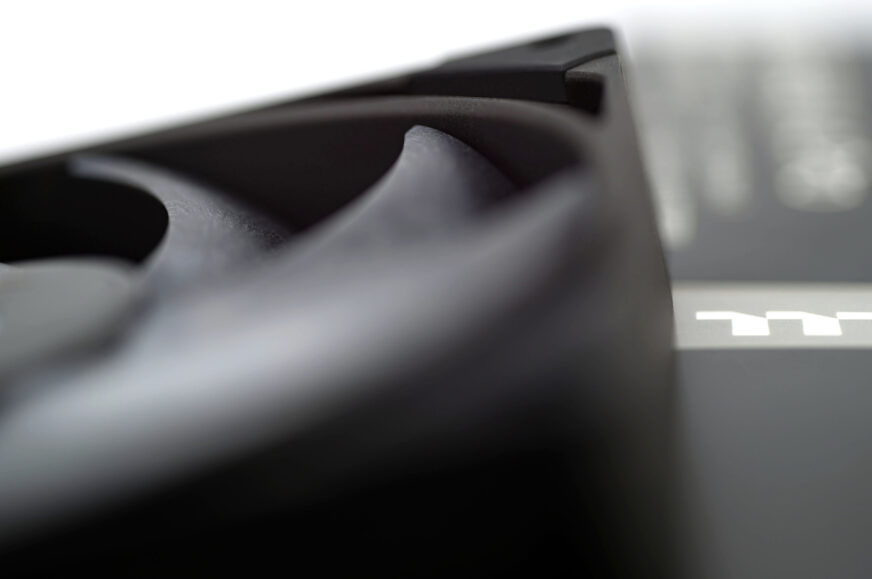
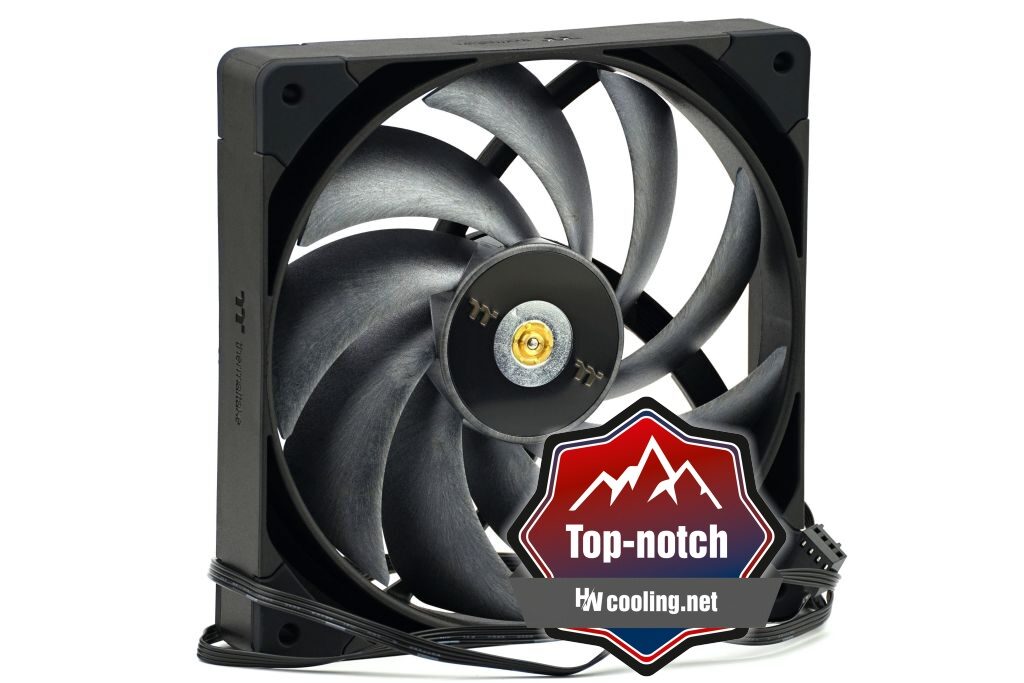
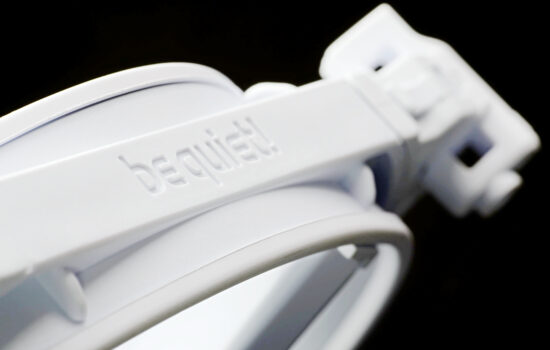

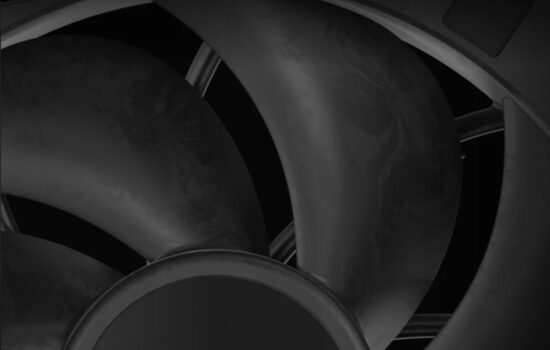


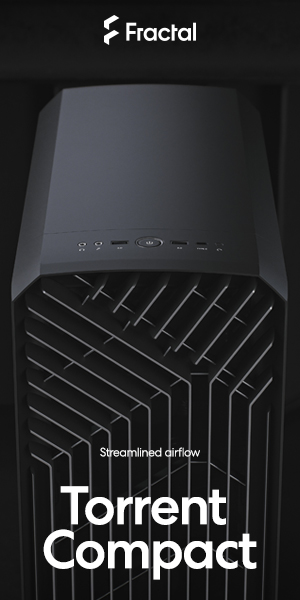
It’s a bit weird that the MTBF is 40000 hours, which translates to 4.6 years of non-stop use, but they offer a 5-year warranty. Are they expecting that a large number of fans will fail before the warranty period ends?
If the clacking is indeed due to poor fitment of the magnet, is it something that can easily be fixed by the user?
With that kind of price and such good performance, I wish they’d increase the price a bit and use better bearings. Spending money on LCP rotor with tight tolerances but skimping on the bearing is a bit weird.
They are rapidly iterating on the design though. Just recently, they have released the EX Pro models which have magnetic connections and user-replacable rotors. Perhaps allowing you to service the bearing yourself is their answer to longevity concerns.
I believe that most users do not have their computer turned on 24 hours a day, 365 days a year and on this basis I assume that Thermaltake has a similar approach to the topic. Therefore i suppose, the MTBF is shorter than the warranty itself.
There are too many question marks around the MTBF/MTTF values and personally they are abstract, ungraspable. Does the numerical value pertain to the maximum speed? Minimum? Or to some normalized speed? The lifetime of a fan is also dependent on its operating speed… only the operating temperature is always given at this value, but what about other characteristics of the surroundings? I guess it is calculated without dust? Or, on the contrary, strong pollution? These things will also have a big influence on the lifetime and probably the cheaper the fans, the bigger. Some bearings are better, others are worse insulated against dust and this leads to hardening of the lubricants typically due to the unclean environment (by mixing with dust particles), which with use reacts more to the increase in friction/power consumption of the fan, until it eventually grinds to a halt sooner or later, depending on the power of the motor.
Even if we were clear on all the variables, I would be more interested in the variance than the mean time between failures. And if these values (MTBF/MTTF) are only the result of estimates under some operating conditions, I consider their informative value to be borderline close to zero. I have tried to shed more light on this also in communication with mechanical engineers, who are closer to these things thematically, but what I write is actually from them.
It’s hard to say about the magnets, but it makes sense given the nature of the clacking sound depending on the position of the fan. And anyway, that clacking sound is not a typical motor sound, nor is it the sound of a bearing. So yes, it is hard to say with 100% certainty, but it is likely that the more or less pleasant sound of the fans is influenced by the workmanship of the magnets. This makes sense to me and that is why we have pulled this statement out of the discussion and into the text of the article as a possible cause. But maybe there is another explanation for the sound… it would be great if someone contributed here (to the discussion) with a more detailed analysis with proper data.
PS: Well, the real number one for radiators is probably the EX14 Pro, if we take into account the mounting, or rather the practical magnetic installation with one cable to the motherboard/hub. Although I am a bit worried that the connector could be overloaded with a current higher than 1 A. Especially after some time of use, after which the power consumption of the fans will naturally increase a bit. It seems to me to be quite on the edge (the sustained peak load of the three new fans at max. speed is ~0.98 A). Perhaps it would be advisable for Thermaltake to recommend connecting a trio of Toughfan EX14 Pro to a 3-amp header (are there any with PWM support? As far as I vaguely remember, I’ve only seen overdimensioned 3-pin DC headers on boards, but I’m not very familiar with this… some PWM headers for pumps could perhaps handle loads up to 2.5 A)? It’s hard to say what the VRM margins are of regular, 1-amp fan headers. I can imagine that in some cases, three such fans will have, during spikes, at least over 1 A, for example when trying to reach higher speeds. The power of the TF (EX)14 Pro’s motor is really high.
I am very happy that the article mentioned my previous comments. I often browse the reviews on your website, especially those about fans.
I am in China, and because this fan is manufactured in China, I could buy it from the channel around May last year.
After trying them out for a long time, I found that TOUGHFAN 12PO and TOUGHFAN 14PRO both have this problem. The impact of magnets causes occasional abnormal noises. Not only that, LIANLI P28 also has similar problems. These three fans are all my favorite among the new products released last year, but the magnet problem is regrettable.
I have also released some fan noise audition videos in China and mentioned these issues, such as https://www.bilibili.com/video/BV1Yu4y1H71G at 10:19
Of course I am not a professional reviewer, just a player who likes to play with fans.
Don’t underestimate yourself. 😉
There are enough people who pretend to understand fans (and computer components in general)… but there are only a handful of people who really have something to say (and bring useful information with their work). And to this group you undoubtedly belong. Fingers crossed for your future work!
Thanks for the comment! And I am glad that this knowledge comes from your own observations. Now I’m very sorry that I don’t speak a word of Chinese, because your acoustic analysis of fans is perfect. A lot of the information is clear from the excellent presentation in the graphs, but I would still very much appreciate understanding the verbal commentary. I’m sure more HWCooling readers would be interested. Are your tests also available in text form (easier to translate), or are there “only” videos available?
Anyway, it is necessary to focus on these things and not to confuse them with the sound of the bearings, which is probably what some people will tend to do, even though bearings cannot technically produce such a sound at such a frequency.
One interesting thing: Note that we measured a higher static pressure with the radiator than without it (without an obstacle). At first glance this may seem like a measurement error, but we can assure you that it is not. In the framework of repeatability of measurements we have focused on this unusual phenomenon and although it is difficult to make any big analysis from these results, one thing is certain. Namely, if one only works with P/Q curves where the airflow is measured at zero static pressure and the static pressure at zero airflow, one will not come to the conclusion about how dominant Toughfan 14 Pro really is on radiators.
Here too, the seemingly meaningless measurements of “static pressure through obstacles” show remarkable correlations. Naturally, the radiators decrease the airflow of the Thermaltake fan, but the static pressure increases in this interaction. This can be attributed to the effective reduction of the “reactive” cross section in the inter-blade space. This is similar physics to what works with smaller fans. Their airflow decreases with the cross-sectional area, but the static pressure remains high. For this 40 mm model at 10,000 rpm, Alphacool quotes up to 11.92 mm H2O. And that, even if in reality it will be half, is still a lot. 🙂
Please do P14 max test!
Don’t worry, he will do it…and not just the Max variant 😉
Arctic P14 Max fan tests will be coming, they’re up next. We’ll approach this in the form of a sort of “trilogy” that will start with the P12 PWM PST, continue with the P12 CO PWM PST, and end with the P14 Max. For a full evaluation of this latest Arctic fan (P14 Max), we consider the results of the P12 (CO) PWM PST to be important.